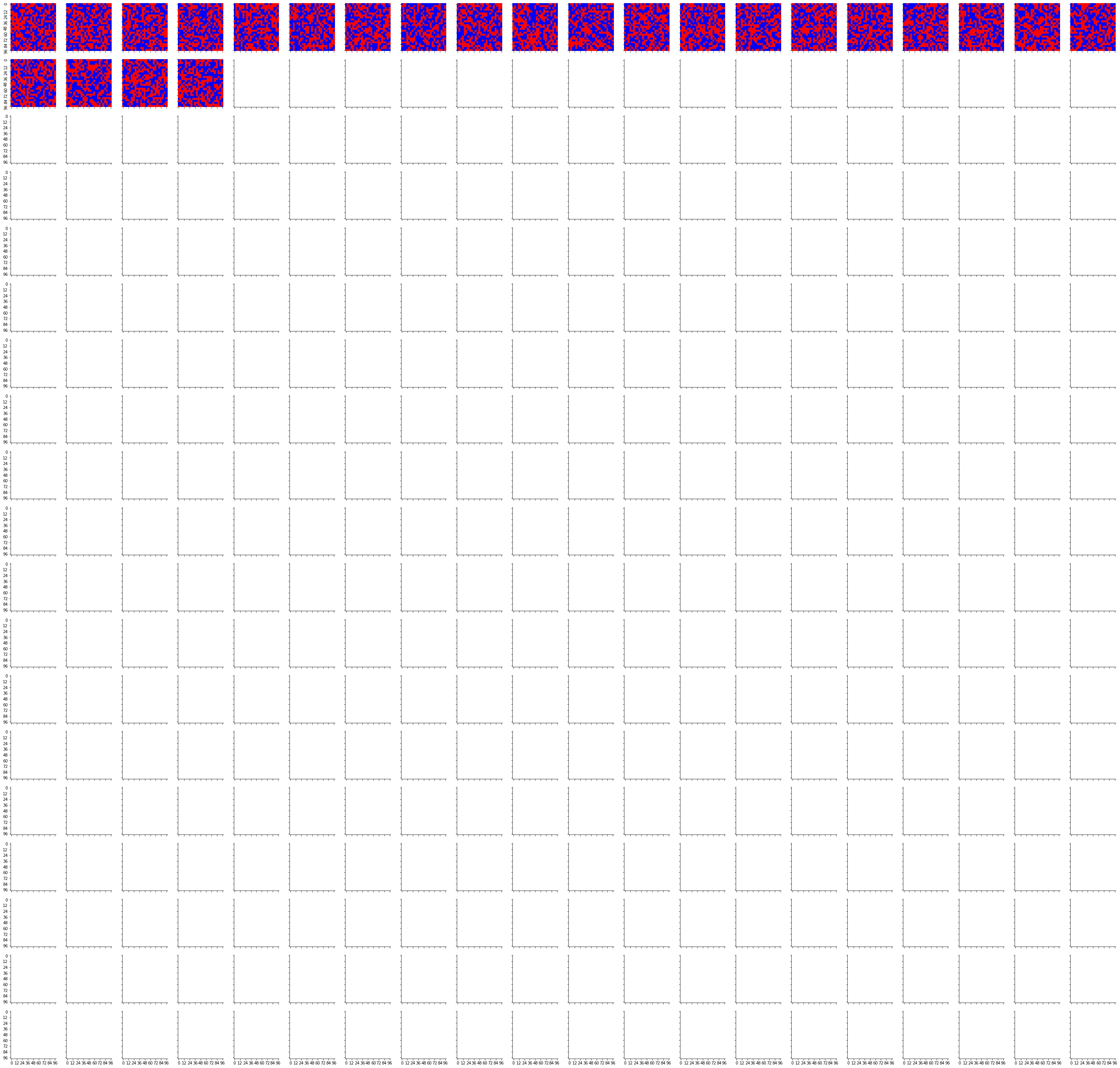我在处理使用seaborn facetgrid绘制热力图的速度问题。我的数据集比之前的问题(链接)更大,感谢@Diziet Asahi提供了解决facetgrid问题的方法。
现在,我有一个20x20的网格,每个网格中有625个点需要映射。即使是一个小的图层little1,也需要很长时间才能得到输出结果。在真实数据中,我有成千上万个little图层。
我的代码如下:
import pandas as pd
import numpy as np
import itertools
import seaborn as sns
from matplotlib.colors import ListedColormap
print("seaborn version {}".format(sns.__version__))
# R expand.grid() function in Python
# https://dev59.com/eGct5IYBdhLWcg3wZMfn#12131385
def expandgrid(*itrs):
product = list(itertools.product(*itrs))
return {'Var{}'.format(i+1):[x[i] for x in product] for i in range(len(itrs))}
ltt= ['little1']
methods=["m" + str(i) for i in range(1,21)]
labels=["l" + str(i) for i in range(1,20)]
times = range(0,100,4)
data = pd.DataFrame(expandgrid(ltt,methods,labels, times, times))
data.columns = ['ltt','method','labels','dtsi','rtsi']
data['nw_score'] = np.random.choice([0,1],data.shape[0])
data 的输出结果为:
Out[36]:
ltt method labels dtsi rtsi nw_score
0 little1 m1 l1 0 0 1
1 little1 m1 l1 0 4 0
2 little1 m1 l1 0 8 0
3 little1 m1 l1 0 12 1
4 little1 m1 l1 0 16 0
... ... ... ... ... ...
237495 little1 m20 l19 96 80 0
237496 little1 m20 l19 96 84 1
237497 little1 m20 l19 96 88 0
237498 little1 m20 l19 96 92 0
237499 little1 m20 l19 96 96 1
[237500 rows x 6 columns]
绘制和定义 facet 函数:
labels_fill = {0:'red',1:'blue'}
del methods
del labels
def facet(data,color):
data = data.pivot(index="dtsi", columns='rtsi', values='nw_score')
g = sns.heatmap(data, cmap=ListedColormap(['red', 'blue']), cbar=False,annot=True)
for lt in data.ltt.unique():
with sns.plotting_context(font_scale=5.5):
g = sns.FacetGrid(data[data.ltt==lt],row="labels", col="method", size=2, aspect=1,margin_titles=False)
g = g.map_dataframe(facet)
g.add_legend()
g.set_titles(template="")
for ax,method in zip(g.axes[0,:],data.method.unique()):
ax.set_title(method, fontweight='bold', fontsize=12)
for ax,label in zip(g.axes[:,0],data.labels.unique()):
ax.set_ylabel(label, fontweight='bold', fontsize=12, rotation=0, ha='right', va='center')
g.fig.suptitle(lt, fontweight='bold', fontsize=12)
g.fig.tight_layout()
g.fig.subplots_adjust(top=0.8) # make some room for the title
g.savefig(lt+'.png', dpi=300)
我在一段时间后停止了代码,我们可以看到网格一个接一个地被填充,这是非常耗时的。生成这个热力图速度极慢。
我想知道是否有更好的方法来加快这个过程?
